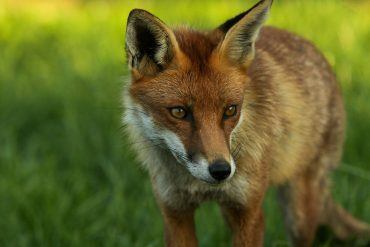
Urban Foxes Take Over Google's £1 Billion London Headquarters
5 minute read

Urban foxes infiltrate Google’s new London tech campus as wildlife claims rooftop garden meant for 7,000 employees
Key Takeaways
- £1 billion Google headquarters invaded by foxes before opening, with urban wildlife colonizing the 300-meter rooftop garden designed for the tech giant’s 7,000 London employees.
- Construction disrupted by “skulk” of foxes digging burrows and leaving droppings across the 11-story King’s Cross building, highlighting urban wildlife adaptation challenges.
- Major tech consolidation in London as Google invests over $1.3 billion in purpose-built campus to house entire UK workforce in single location.
Introduction
Google’s ambitious new London headquarters has attracted unexpected tenants before its official opening. Urban foxes have colonized the tech giant’s £1 billion King’s Cross development, turning the building’s expansive rooftop garden into their temporary home.
The 11-story “landscraper” stretches 1,082 feet wide and houses a 300-meter rooftop garden designed to inspire creativity among Google’s 7,000 planned employees. Instead, the eco-conscious space has become a playground for London’s resourceful fox population, creating an unusual intersection of urban development and wildlife adaptation.
Key Developments
Construction crews discovered fox burrows and droppings throughout the building during the final stages of the project’s completion. The foxes reportedly colonized the site during early construction phases when access points remained open, establishing themselves across multiple floors.
A construction source familiar with the situation describes the foxes’ behavior: “There’s a little hole in the garden where one lives. We’ve seen her all around the building – one second she’s on the fifth floor, the next she’s on the garden floor. No one has been able to catch her.”
The building, designed by Thomas Heatherwick Studio and Bjarke Ingels Group, incorporates sustainable features targeting BREEAM ‘Excellent’ and LEED ‘Gold’ certifications. The rooftop garden was specifically designed to attract butterflies, birds, bees, and bats as part of the environmental initiative.
Market Impact
The project represents Google’s largest single real estate investment in the UK, with over 1 million square feet of construction space. The development reinforces London’s position as a European tech hub, with Google consolidating its scattered London workforce into one central location.
Construction delays from wildlife management remain minimal, according to NBC News, with Google stating that fox appearances are brief and haven’t disrupted the building timeline. The headquarters is scheduled to open later this year as planned.
Commercial real estate experts view the investment as significant validation of London’s tech sector resilience, particularly given the scale of Google’s commitment to physical workspace despite remote work trends.
Strategic Insights
Google’s consolidation strategy reflects broader industry trends toward purpose-built campuses that foster collaboration and innovation. The King’s Cross location positions Google within London’s Knowledge Quarter, creating proximity to academic institutions and startup ecosystems.
The building’s flexible design incorporates both permanent concrete and adaptable timber floors, allowing workspace reconfiguration as business needs evolve. This adaptability addresses uncertainty around future office utilization patterns in the post-pandemic business environment.
The headquarters will likely serve as a testing ground for Google’s latest AI-powered productivity tools, including Gemini for Google Workspace, which integrates artificial intelligence into Gmail, Docs, and other core applications.
Expert Opinions and Data
Wildlife experts note that London hosts approximately 10,000 to 15,000 foxes, equating to 16 per square mile. Terry Woods of Fox-a-Gon explains that “London is a big playground for foxes – they will go absolutely anywhere.”
Pest control specialist Mosh Latifi from EcoCare suggests the foxes are likely feeding on local rat populations, noting “We don’t live more than three meters away from the nearest rat.” He explains that urban foxes possess remarkable adaptability, fitting through narrow openings and climbing to access elevated spaces.
The average red fox lifespan ranges from three to four years, with national UK populations fluctuating between 150,000 in winter and 400,000 during cub season. These statistics suggest the current fox residents may have established territory during the building’s early construction phases.
Local residents have mixed reactions to the wildlife presence. King’s Cross manager Hanei Mokenen learned about the foxes through social media, expressing surprise given the area’s typically tight security protocols.
Conclusion
Google’s fox problem illustrates the complex relationship between urban development and wildlife adaptation in major cities. The situation demonstrates how London’s substantial fox population continues to find creative solutions for urban survival, even in high-security construction environments.
The incident highlights the practical challenges of sustainable building design when eco-friendly features attract unintended wildlife residents. Google’s response emphasizes minimal construction impact while acknowledging the foxes’ temporary presence as part of London’s urban ecosystem reality.





